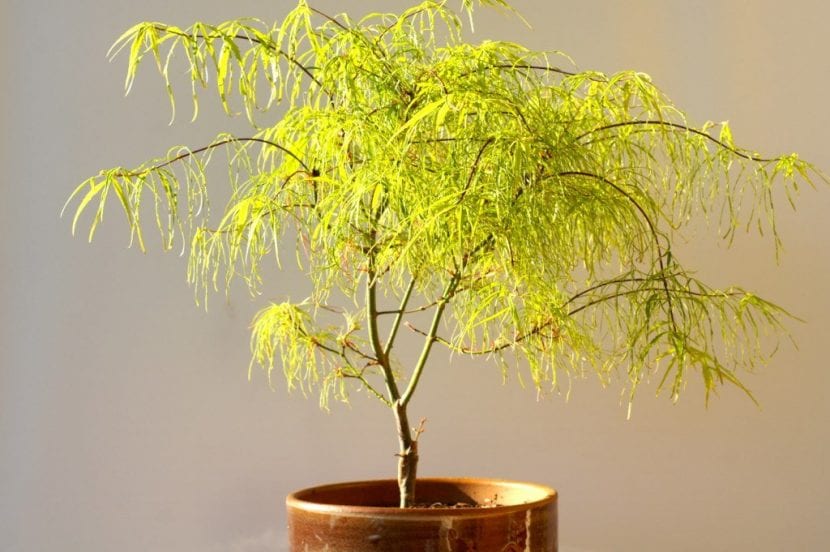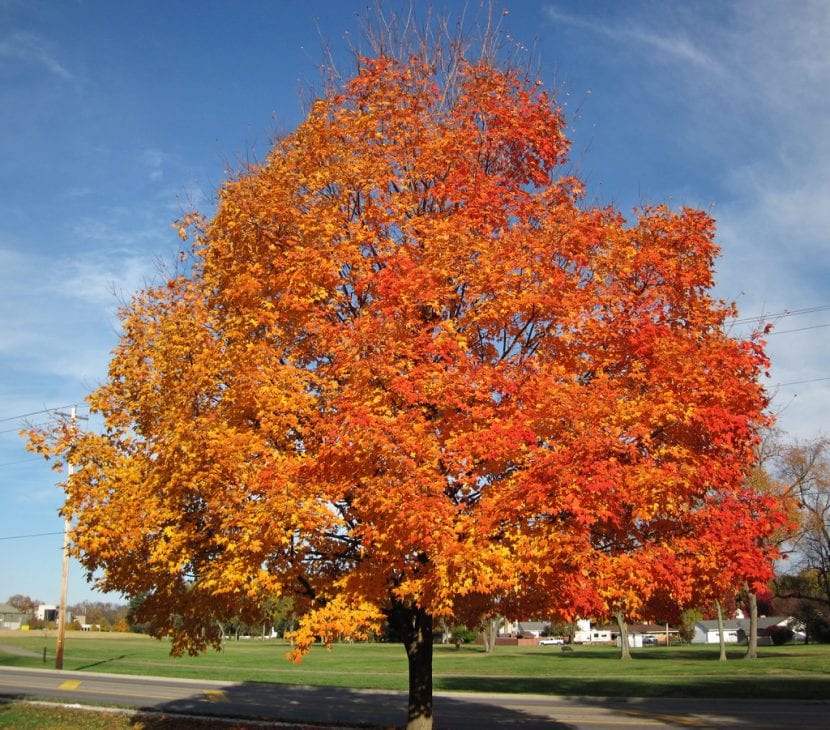
When we acquire a deciduous tree that we know must change the color of its leaves at some time of the year (usually in autumn, but it can also be in spring and / or summer), we look forward to it; indeed, we become convinced that it will. So, we are very disappointed when it does not.
Why doesn't my tree change color? What is happening to him? Below you will find the answer to these questions. 🙂
Why do trees change color?

Koelreuteria paniculata
In autumn
As we know, the leaves of the trees are green -in the vast majority of species-. This pigment is chlorophyll, which is used to carry out photosynthesis and, as a consequence, to transform the Sun's energy into food. However, with the arrival of autumn the hours of sunlight are reduced, so that chlorophyll begins to be unnecessary and decomposes, freeing up other pigments, such as carotenoids (orange-red in color) and anthocyanins (purple).
At other times of the year
As long as the trees are healthy, that is, that they are in the right location receiving the care they need (watering, compost, pruning), they should not change color. But there are some that do: the best known being the japanese maples. For example, him Acer palmatum 'Atropurpureum' in spring it produces red leaves, in summer they become greener and in autumn it returns to its original color. Why?
It can be for several reasons: to be able to carry out photosynthesis and therefore stay alive without difficulty during the summer, and to avoid losing more water than is strictly necessary.
What to do to make the leaves change color?
For the trees to change color, the following is very important:
The weather must be right
It is very difficult for a deciduous tree native to northern Europe - for example - accustomed to heavy snowfalls, to change color in the extreme south of Spain where it practically never freezes. It is important to know the climatic needs of the plant that interests us so that we do not get surprises later.
Must be a little thirsty
When they told me I didn't believe it, and you may not believe it either until you see for yourself, but yes, it is. If you want your tree to be beautiful in autumn You must stop pampering him just as soon as you notice that the temperature begins to drop, towards the end of summer. Of course, you do not have to make him thirsty, but it is highly advisable to reduce the frequency of watering a little.
The substrate or soil must have the pH required by the plant
The pH, that is, the potential for hydrogen, can be very low, which will mean that that earth is very acidic, or very high, which will be telling us that that earth is very alkaline. Each plant grows better at one pH than another; thus, while the acidophilic they need a soil or substrate with a pH between 4 and 6; there are many others, such as those that inhabit the Mediterranean region, which only develop in soils with a pH of 6 to 8.

Acer
With this we are done. In any case, if you have any questions, you know that you can contact us. 🙂